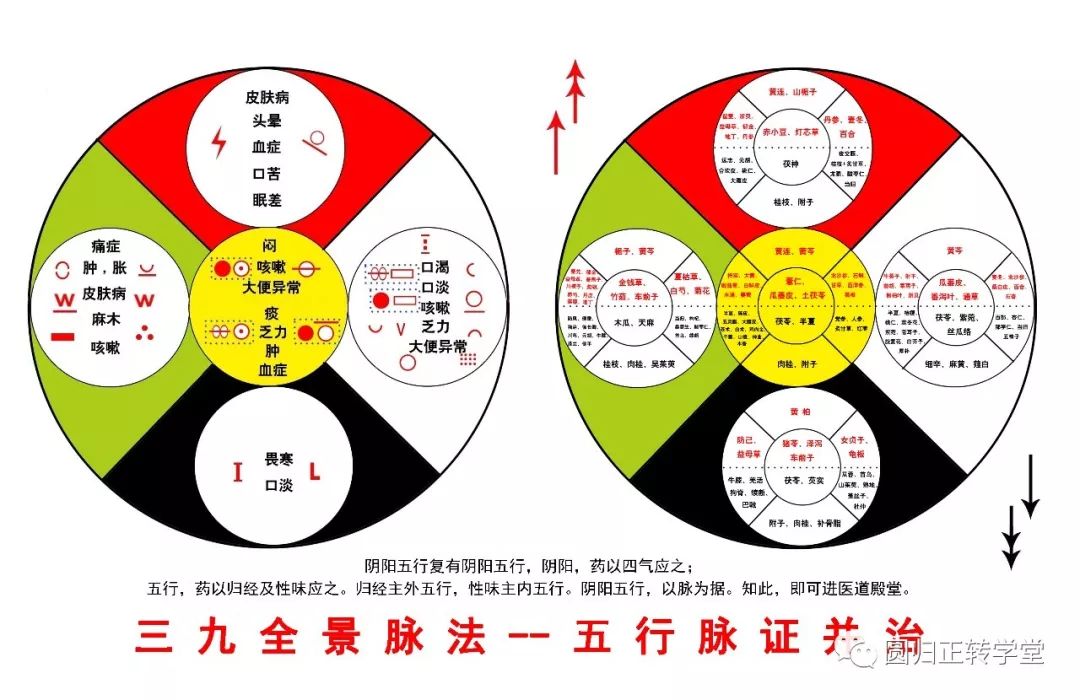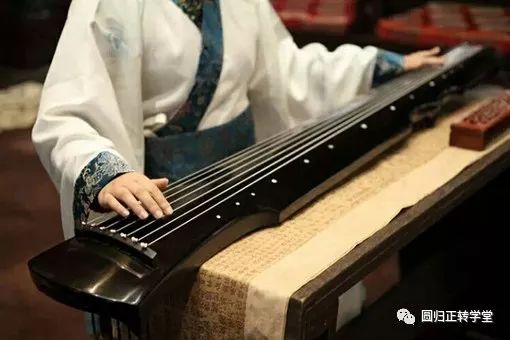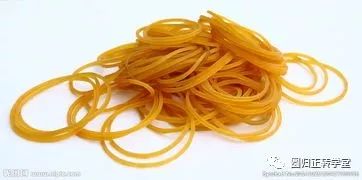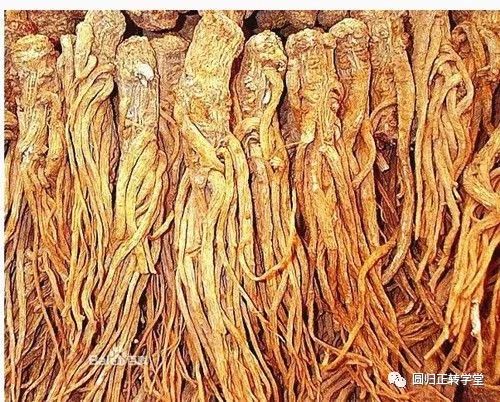The Comprehensive Pulse Diagnosis Method of Sanjiu emphasizes the standardization of pulse sensations. Each pulse type has a unique tactile representation, and its characteristics are relatively singular, allowing for physical imagery to express them rather than remaining in idealized, intangible metaphors.

The Xian pulse, described as “like pressing a guitar string,” is widely recognized. However, in reality, guitar strings can be “loose or tight”; loose means relaxed, while tight means stretched or tense. Pressing a slightly relaxed guitar string corresponds to the Xian pulse; pressing a taut string corresponds to the hard pulse. Both pulses have a hard component, but the Xian pulse has a curvature and a certain degree of relaxation, while the hard pulse lacks curvature.

With its representation, there must be a corresponding principle. The Xian pulse indicates blood deficiency and stagnation, while the hard pulse indicates blood stasis. Both pulses signify blood congestion, but the hard pulse is more obstructive than the Xian pulse. Clinically, the Xian pulse often accompanies a small pulse, where the small pulse indicates insufficient body fluids and blood, while the Xian pulse indicates blood stagnation. Using blood invigorating and stasis-resolving herbs can eliminate the small pulse, confirming that the Xian pulse is associated with blood deficiency and stagnation.
The treatment for the hard pulse focuses on breaking blood stasis and softening hard masses. Clinically, the hard pulse often presents with severe lumbar muscle pain or hard nodules in the neck’s thyroid gland, treated effectively with E Zhu (Curcuma zedoaria), Wu Ling Zhi (Flying Squirrel Feces), Da Huang (Rhubarb), Bie Jia (Soft-shelled Turtle Shell), and Hai Fu Shi (Sea Float Stone).
The Xian pulse also shares significant similarities in tactile sensation and main symptoms with the Jiao pulse. The Jiao pulse feels like pressing a rubber band, being soft and long. If asked, why is there no mention of the Jiao pulse in various texts? Is it merely to be unique? I do not intend to be unique; rather, I am dedicated to the pulse and the spirit of seeking truth. I discover this pulse sensation daily in clinical practice, resembling the Xian pulse but distinctly different, with different main symptoms and treatments. In studying TCM, we should be like the honest child in “The Emperor’s New Clothes,” rather than deceiving ourselves like the adults. Clearly, the Jiao and Xian pulses are different, yet due to the absence of prior mention, one may hesitate to speak the truth. I simply regard myself as an innocent child, speaking the truth.

The differences between the Jiao and Xian pulse sensations are: first, the Xian pulse is like a guitar string, while the Jiao pulse is like a rubber band; the Xian is hard, while the Jiao is soft; second, the Jiao pulse is often larger, while the Xian pulse is often smaller; third, the Xian pulse indicates blood stasis, which can be resolved with blood invigorating and stasis-resolving herbs, while the Jiao pulse indicates phlegm and dampness, which can be resolved with phlegm-dispelling and dampness-dispelling herbs. The unique tactile sensation, main symptoms, and corresponding herbs naturally warrant naming.
The Xian pulse is the main pulse of the liver wood. The liver is the blood reservoir, responsible for storing blood. The liver governs the smooth flow of Qi, and anything that is stagnant requires the liver’s dispersing function to unblock it. Among all pulse types, the Xian pulse has the strongest dispersing function due to its hardness and length, along with a degree of relaxation, making it the most resilient. Following the natural way, the Xian pulse possesses the greatest ability to unblock. Thus, the Xian pulse indicates that blood flow is obstructed, and the liver wood is defending itself.
The Xian pulse indicates blood route obstruction, while the Jiao pulse indicates water route obstruction. The Jiao pulse also belongs to the wood category, and when the water route is obstructed, it also utilizes the liver’s dispersing ability to unblock it. Other pulse types indicating phlegm and dampness include Ru (Soft), Hou (Thick), and Zhu (Bead), which merely represent different viscosities of body fluids. The Jiao pulse signifies the highest viscosity of dampness, indicating the most severe water route obstruction.
The Xian pulse often accompanies the small pulse, with Dang Gui (Angelica Sinensis) being the main herb.
What is the standard for the small pulse accompanying the Xian pulse? The normal adult pulse size is approximately 2-3 millimeters. This estimate is based on the standard of “one-eighth of the body size” by Chen Jianyuan from Taiwan. In clinical practice, if the pulse sensation is below 1.5 millimeters, the small pulse can be distinctly felt. The definition of the small pulse is: a pulse sensation size smaller than 2 millimeters is considered a small pulse. It is important to note that this refers to the sensation size, not the anatomical size of the pulse vessel.
The Xian pulse indicates blood stasis; pungent herbs can disperse, and bitter herbs can drain. The treatment for the Xian pulse primarily involves pungent and bitter herbs. Warm and moist herbs can nourish blood, while cool and moist herbs can nourish body fluids. Dang Gui is pungent and bitter, warm in nature, and moist in quality. The Xian pulse indicates blood deficiency and stasis; the warm and moist nature of Dang Gui can nourish blood deficiency and treat the small pulse, while its pungent and bitter properties can disperse and treat the Xian pulse.

Thus, for the Xian small pulse, Dang Gui is the main herb.
Qi is Yang, and Yang is active; if it is weak, it indicates Qi deficiency. The Xian fine pulse generally accompanies weakness, indicating that the blood contains warm Qi; if the blood is deficient, the warm Qi is also insufficient. It is often combined with Gui Zhi (Cinnamon Twig).
If the Xian fine pulse accompanies multiple pulses, it indicates heat stagnation, and herbs like Dan Pi (Moutan Cortex) and Chai Hu (Bupleurum) are combined with Dang Gui.
If the Xian pulse is very pronounced, like touching a knife’s edge, and if it is urgent, it is combined with Chuan Lian Zi (Toosendan Fruit) and Dang Gui. This indicates blood stasis and Qi stagnation; Chuan Lian Zi drains the Qi, while Dang Gui nourishes blood and resolves stasis.
Wang Shuhe remarked in the preface of the “Pulse Classic” that the pulse sensation is “easy to understand in the heart, but difficult to clarify under the fingers.” The lack of standardization in pulse sensations is the fundamental reason for the difficulty in clarity!
… Promoting the Sanjiao Three Parts Nine Pulse Method of the “Nanjing” is a heavy responsibility and a long way to go.

